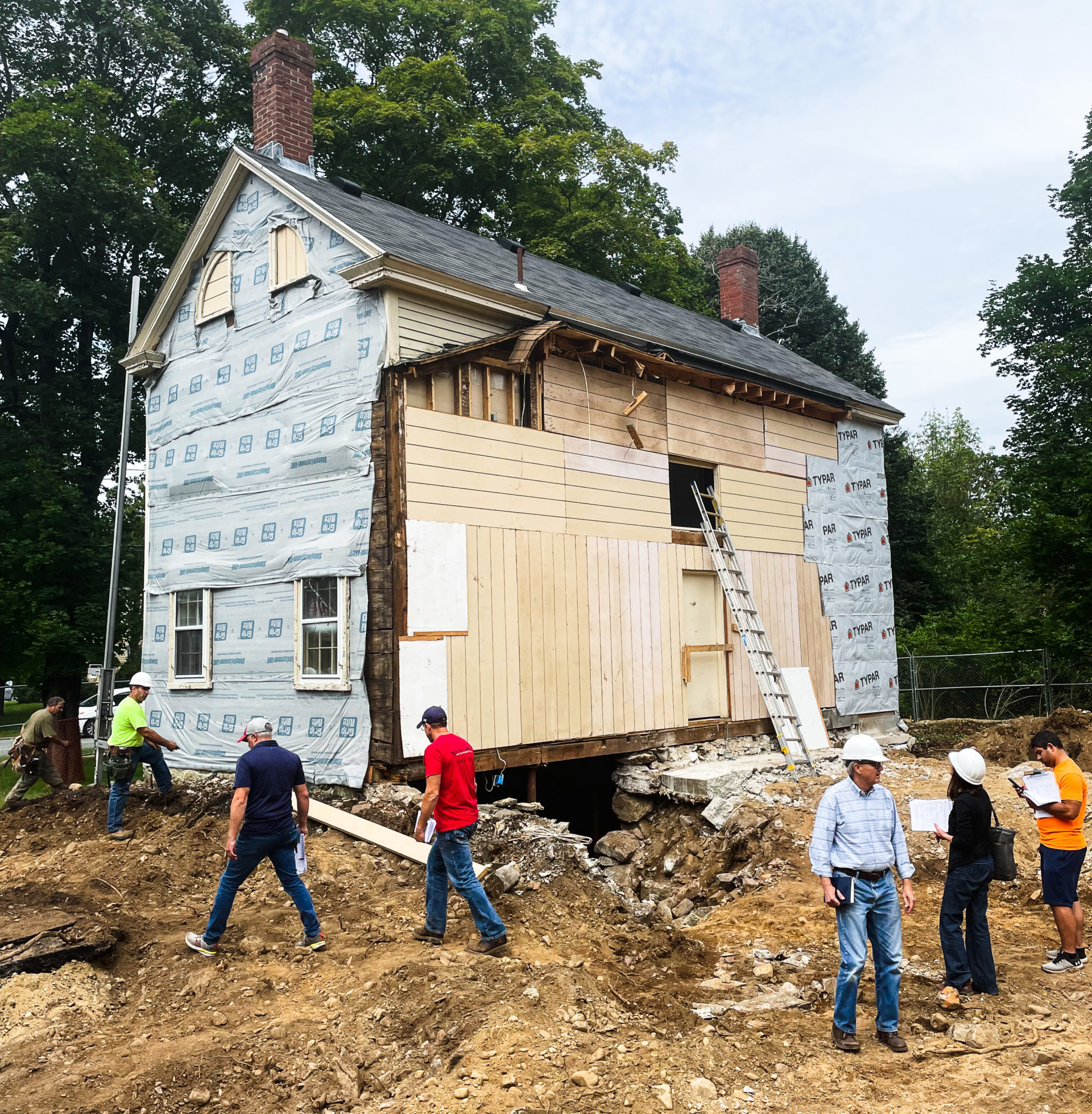

Managing a renovation or addition project successfully requires close attention detail, constant communication with project stakeholders, and the adaptability to respond quickly and cost-effectively when unforeseen conditions appear. These challenges are compounded exponentially when the project involves historic characteristics and features. The desire (or need, if the facility is a registered historic site at the local, state, or federal level) to maintain the facility’s historical character and authenticity while meeting current code requirements, incorporating new technologies, meeting sustainability goals, and fulfilling the purpose of the renovation project itself can make historic projects confusing and frustrating for owners and teams alike.
Thankfully, construction managers have an arsenal of best practices and lessons learned to help realize historic projects successfully. These tools and methods range from relatively common project and construction management practices, such as using a stakeholder register to ensure all authorities having jurisdiction (AHJs) are kept informed and up to date on the work, work breakdown structures to detail and define each task involving a historic element or feature, and new technologies, such as PM software packages, to manage change.
Hill International, Inc., a program, project, and construction management firm, began managing construction projects in the metro-Philadelphia, PA, area more than 45 years ago, where colonial and other historical elements were common on many public buildings. Today, Hill is a global firm managing projects around the world, but with much of its public facilities work still concentrated in the New England and Mid-Atlantic U.S. regions. This includes Hill’s work on historic libraries in Massachusetts, museums in New York City, and monuments in Washington, DC.
Historic Projects in An Historic Town: Boxford, MA
Boxford, MA, was first settled in 1646 and officially incorporated in 1685. Church construction in Boxford date back to the early 1700s, and examples of early American architecture and construction are common throughout the 24-square mile town. Located in the Northeastern region of the state, Boxford is also within commuting distance of Boston and is connected to the metro area by Interstate 95, several state Routes, and nearby by the Massachusetts Bay Transportation Authority’s (MBTA) Newburyport-Rockport Line. Maintaining the balance of Boxford’s historic character with the need for modern, up-to-date public facilities and services for residents is evident in many of the Town’s recent construction projects. This includes the current renovation and addition of 10 Elm Street to establish a Community/Senior Center.
“Boxford shares many characteristics with its neighbors in the region,” says Hill First Vice President, New England Operations Peter Martini. “But Boxford also has its own priorities and preferences. For this renovation project, emphasizing and maintaining the historic character of the facilities was important to the Town, but they also expected work to meet cost and schedule goals.”
PM Technology Plus PM Experience Equals Historic Success: The Boxford Community/Senior Center
Hill Program Manager Paul Kalous, AIA, MCCPO, is overseeing construction of Boxford’s Community/Senior Center project. With a mission to “improve the quality of life and encourage maximum independence for older adults by meeting their health, economic, social, and cultural needs,” the Center offers senior residents line dancing, chair yoga, Tai Chi, games, veterans’ services, and art classes, and also welcomes younger generations for various activities.
To continue to meet this mission, the Town has embarked on the historic rehabilitation of the existing Cummings House, which is more than 150 years old and houses part of the Center, the demolition of several nearby structures, and adding a new single-story building. The project also involves extensive sitework, including a new stormwater management system, paved parking lot and driveways, walkways, emergency generator, electrical transformer, and exterior pole lighting and fencing.
“The Cummings House is the embodiment of late-19th century New England design and construction,” says Kalous. “It’s a timber-frame home, first donated to the Town in 1938. It actually served as the Town’s library for many years and is well-loved by Boxford residents of all ages.” Hill is overseeing work on the historic elements of the Cummings House and will be managing all the interfacing construction activities.
Kalous explains that, as construction begins, the team is emphasizing protecting the Cummings House. “We’ll start with a close eye to safety, quality, and cost,” says Kalous. “Then we’ll approach the work that impacts the Cummings House specifically with particular attention to managing dust, noise, and any other disturbances that could impact the house’s historic elements—this is especially critical when certain features that haven’t been disturbed for 80 years or more are exposed, and heavy equipment is being used nearby.”
The team has already encountered a major challenge. “While we were uncovering the rear foundation to build the foundation of the addition, we discovered gaps in the stone and rubble big enough to see through,” says Kalous. “So, we are replacing that wall. We are also scraping out joints as much as hand tools allow and then filling the basement with flowable fill to seep into the nooks and crannies of the rubble on the other three walls.” Kalous explains this technique will also encase the brick masonry supporting the fireplace and separate chimney. “Because of the soil behind the wall filled the voids, one could not see how porous the foundation had become. But this hands-on approach is still more economical than forming concrete walls to reinforce the old stone. It’s the kind of new-and-old combination common on historic projects—you need to respect the structure.”
Somewhat counterintuitively to the need for working with hand tools, Kalous points out that the CM team will use the latest in project management technology to guide the work. “We’ll use Procore project management software to document progress and keep the Town and team informed at each step. On a historic project, you are going to encounter change, and this tool helps us manage that change while protecting the Owner’s budget and schedule.”
Kalous adds that, in addition to change management, Hill’s online tools will support processing payment requisitions, requests for information, submittals, and field observation reports. He explains: “A tablet loaded with our management tools in the hands of an experienced Site Representative can expedite the resolution of issues with clients, architects, consultants, and subcontractors in the moment. And that’s exactly what we’ll have at the Community/Senior Center with our team.”
Real Experience, Real Results
“Hill has managed projects with historic elements across Massachusetts,” says Martini. “Many CMs claim that their experience matches up with the requirements of whatever project they support, but in the case of historic projects you just can’t fake it. You either know the nuances of these projects or you don’t.”
Martini adds that it’s this first-hand experience that will enable Boxford’s CM team to manage work on the Town’s historic facilities successfully. “For Hill, the personnel we assign are often residents of the Towns and Cities where they’ll be working. It might sound trite, but it really adds something to the process when you have management personnel who have lived, worked, and played in the exact types of buildings where work is happening. I’m not going to call our team historic, but we’ve certainly got roots in these historic facilities.”
Share

June 23, 2025 | Articles
Jeffrey Hurley Joins Hill’s Northern California Rail Practice

June 23, 2025 | Articles
Ready, Set, Grow: First VP Chad Koelling Takes Charge of Hill’s Mountain West Region

June 8, 2025 | Articles
PMO in Saudi Arabia: The Holistic Approach to Realizing a National Mega-Portfolio

June 1, 2025 | Articles

May 26, 2025 | Articles

May 12, 2025 | Articles
Keeping Your Water/Wastewater Programs Flowing with Public Relations

April 27, 2025 | Articles
Oiling the Machine: Steps to Successful Permitting on Infrastructure Megaprojects

April 20, 2025 | Articles
Sustainable Scaling: Solutions for Managing Risk on Europe’s Data Center Projects